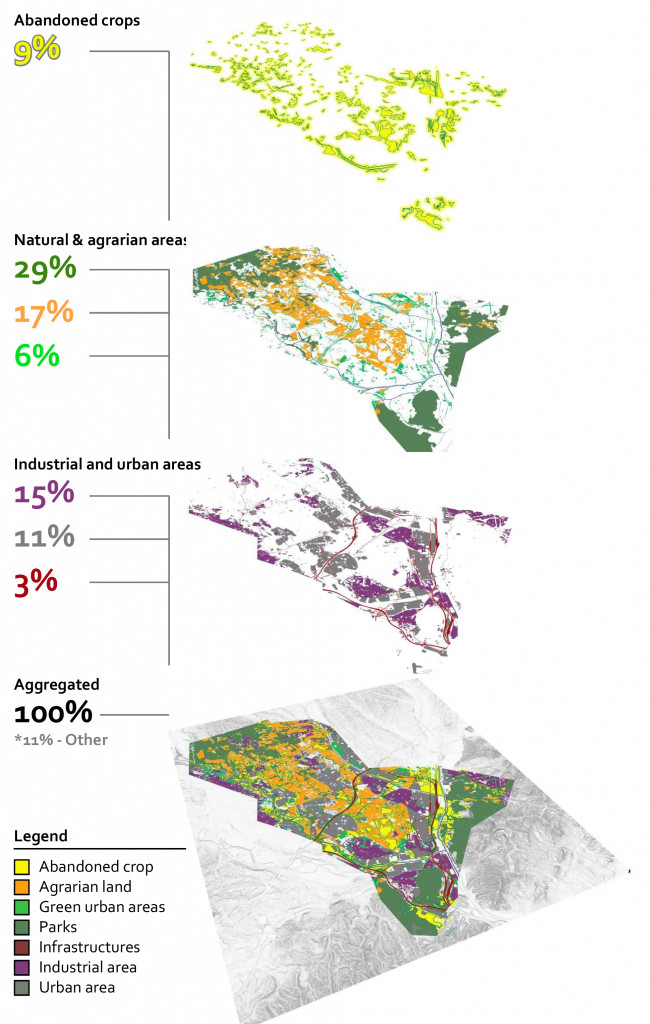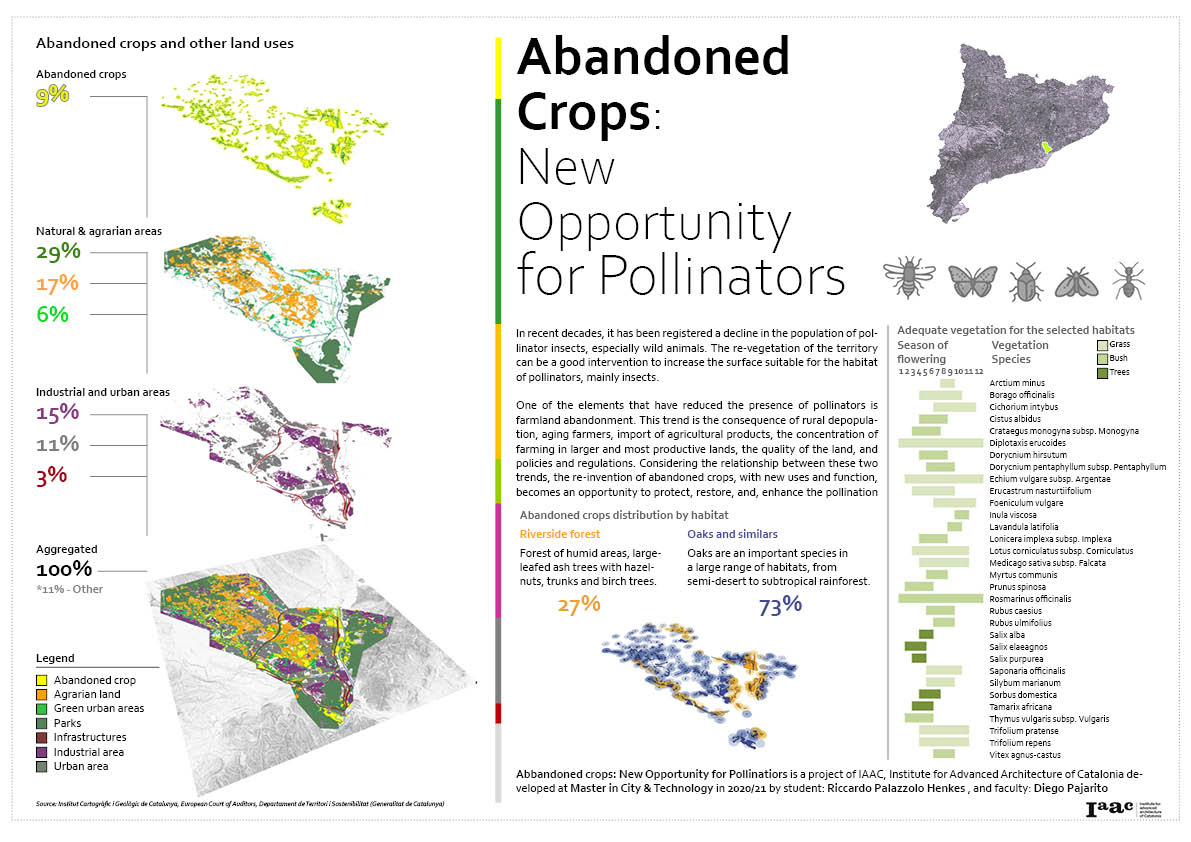Introduction
Considering the relevance of pollinators for food production and fertilization of plants, the following analysis aimed to analyze the potential of abandoned crops as a new functional element in terms of pollination. This potential is understood as the possibility of abandoned crops becoming key habitats to attract and protect the most common pollinators, such as bees, butterflies, and, moths.
Within the studio project, the rewilding challenge related to Barcelona has been focused on the promotion of a new green corridor in the area of el Vallès. This area is particularly interesting since is surrounded by natural parks and among its valleys and hills presents an agroforestry system mixed with cities and industrial parks.
Territorial analysis
The goal of this analysis is to identify the existing abandoned crops and use them as a canvas for the implementation of interventions that can enhance the pollinations in the area. The following maps resume the land uses of the entire corridor, showing how the abandoned crops represent just 9%. Active agrarian land, natural parks, and urban green areas represent 17%, 29%, and 6% respectively. Considering all these uses as pollinator-friendly (61% of the total area), the abandoned crops can represent key elements to catalyze pollination.

Territorial analysis by land uses
Abandoned crops categorization
Once identified the abandoned crops and related them to the rest of the uses, the important aspect for the research was to categorize them based on its connectivity and potential pollination habitat:
- In terms of connectivity, the abandoned crops along the river and the large ones clustered together present higher connectivity.
- In terms of habitat, the main habitat for pollination is represented by oaks and similar, while the riverside forest is concentrated by the rivers that flow along the borders of the corridor.
Finally, focusing on the potential interventions that can make a difference in terms of ecological connectivity, the following graph shows the specific vegetation that can be used. This information is categorized based on vertical stratification (grass, bush, tree) and presents the blooming season per each species.
Conclusion
This entire analysis has shown:
- The abandoned crops distribution, together with other pollinator-friendly uses, can create a to create a pollination network along the corridor
- Each habitat present the more suitable vegetation that can improve the pollination potential, becoming the first step to promote a new regenerative process
 Final poster
Final poster
Source: Institut Cartogràfic i Geològic de Catalunya.
Abandoned crops: New Opportunity for Pollinators is a project of IAAC, Institute for Advanced Architecture of Catalonia developed at Master in City & Technology in 2020/21 by student: Riccardo Palazzolo Henkes, and faculty: Diego Pajarito